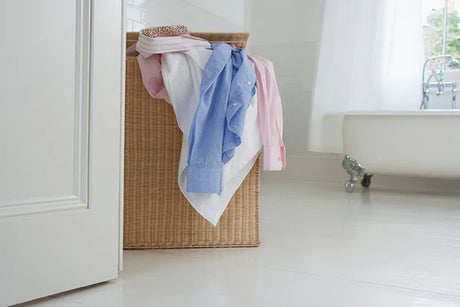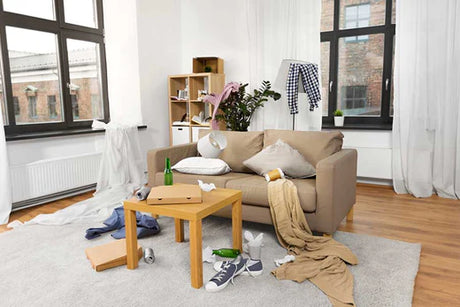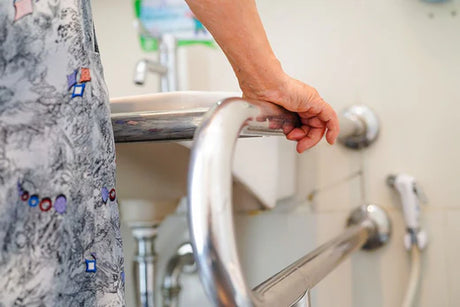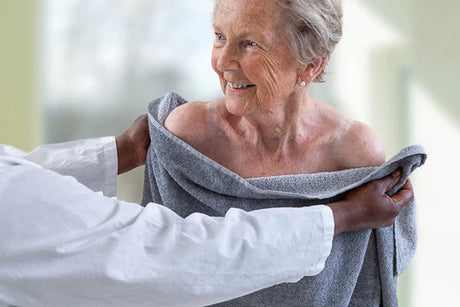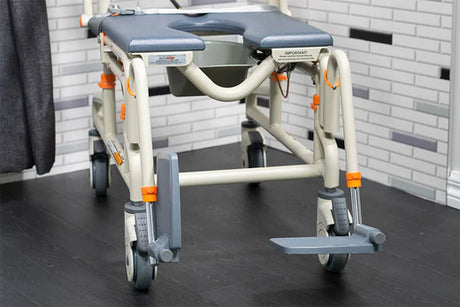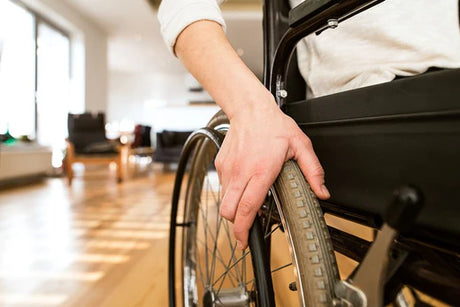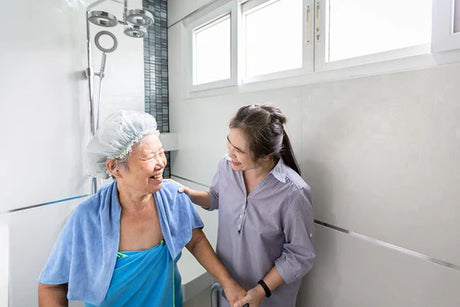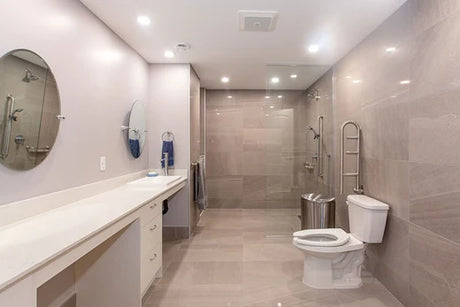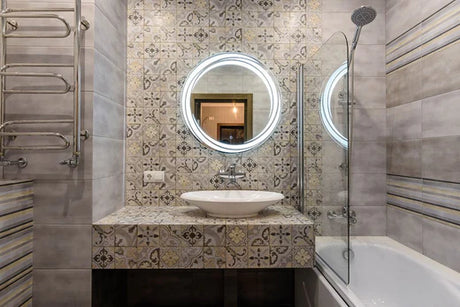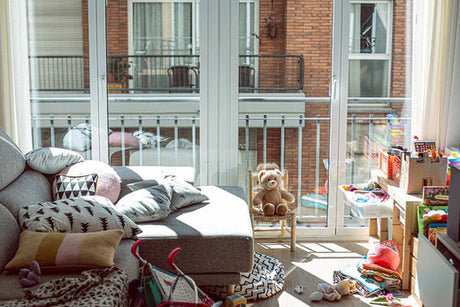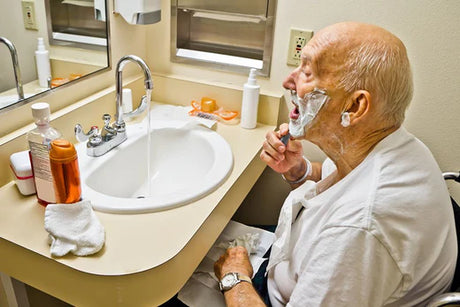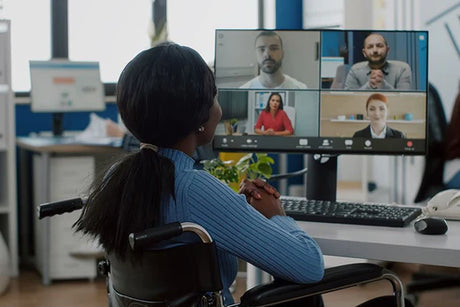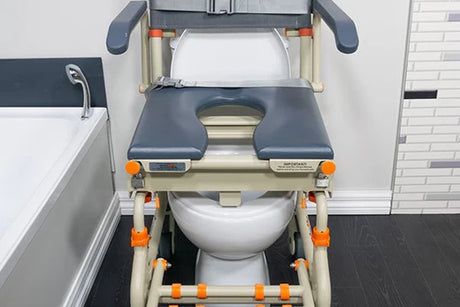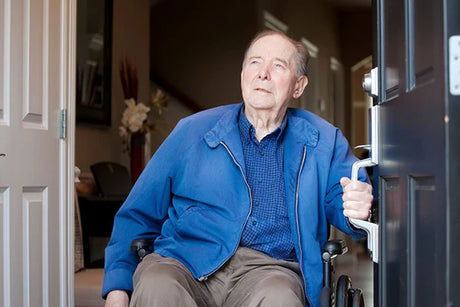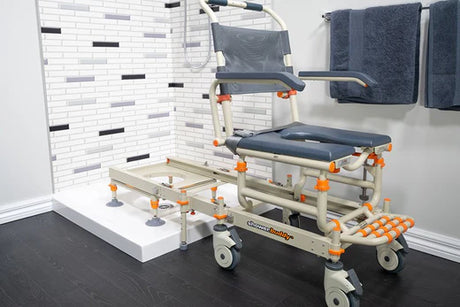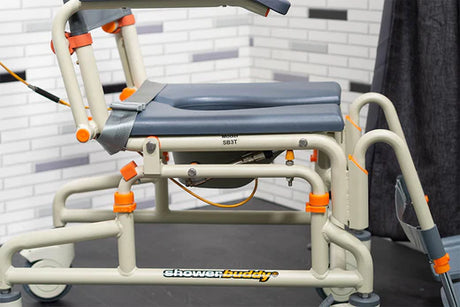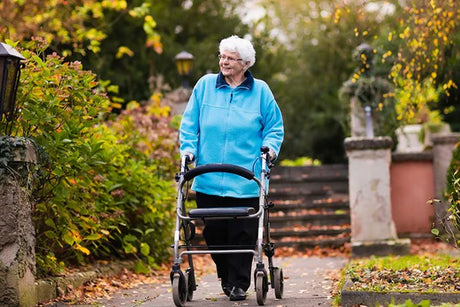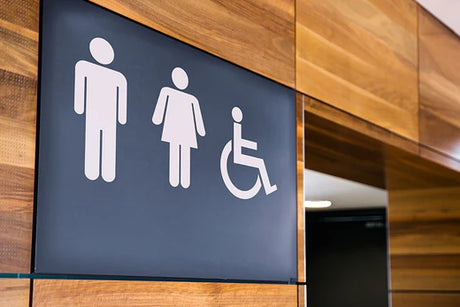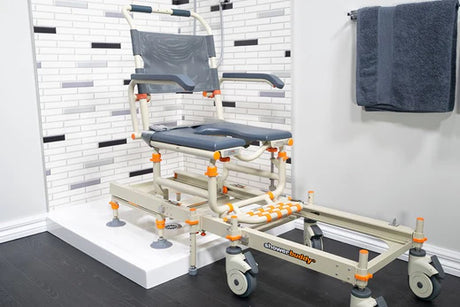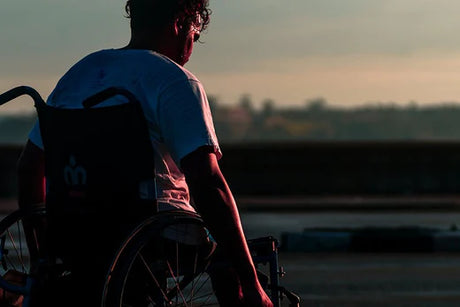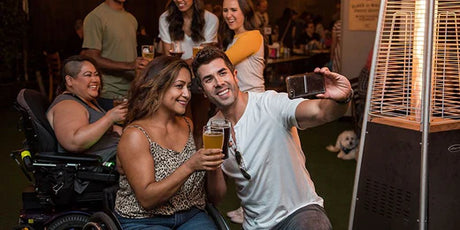Managing everyday life with a disability can be incredibly hard without the right support in place. Whether a new impairment or lifelong condition, Individuals coping with home life as a disabled person may experience some tough challenges when using the bathroom, from shower safety, bathing to toileting and everything in between.
We work alongside mobility-impaired people every day, as well as their occupational therapists (OTs), physical therapists (PTs), their home carer, their friends, and of course, their family. We know the large range of disabilities that can prevent complete independent bathroom use, and understand that no two people are the same exactly in terms of the help they need.
If you, your loved one or in the case of an OT, your client is looking to enjoy a safer bathroom experience, this article will offer some ways you might go about this. Stay reading until the end – especially if you need to avoid a full bathroom remodel!
Having a good home care plan
As with all disabilities, shower safety and comfort starts with a robust plan. An OT will work with a disabled person to fully understand all of the daily or weekly activities that need to be done; hobbies, travel and of course using the bathroom and shower. For bathing, the OT and support people will put together a plan that enables the individual to shower safely in their preferred way to the extent that is possible. This might include discussions around body position during bathing, the transfer process, who will support bathing, equipment needs, timings of daily showering, access to the bathroom and any other factors to be considered.
One of the key considerations is going to be bathing roles and responsibilities – where does family come into the equation vs. a professional home care person? All of this will be worked out by the OT and relevant health service ahead of the new routine getting underway.
Without a good home care plan, equipment or remodelling may be misused or not be appropriate for all the individual’s needs. Like many things in life, good preparation will pay off down the track.
Home Carer support
Having a home carer can make life easier on everyone. First, and most importantly, the disabled individual can enjoy having someone that’s trained in all the facets of supporting bathroom mobility – lifting, transferring, bathing help and communication. A home carer will build trust with their client, and take care to support them to shower in the safest way possible
But the home carer is also great for the family and friends of their disabled loved one, as the pressure on them to do the hard tasks like showering will be taken away. For many families of recently-disabled people, the shock and adjustment to everyday life can be overwhelming, without adding in 24/7 care duties, too. A home carer also frees family up to work, go out and do other jobs they’re more comfortable doing. And in many cases, the process of transferring, lifting and bathing someone is too much to handle physically which makes a home carer essential for the safety of the individual.
Family and friends help with showering
Of course, family and friends will be part of the equation, especially if you’re away from home or during a period where a home carer isn’t around. In these situations, a disabled person will rely on friends and family to ensure safe access and use of a shower, possibly with the help of equipment. Family can help remove obstacles and tripping hazards, and also clean the bathroom and shower to ensure slipping risks are reduced and shower safety improved. Some families are comfortable handling the whole bathing process themselves, and for some disabilities this is a perfectly reasonable solution. How this support is provided will depend on a number of things, but often some equipment to enable family support will be used (more on this later!)
Anti-slip flooring
Slipping hazards in the bathroom are risky for everyone, not just those with physical disabilities. Wet or inappropriate bathroom flooring is hard enough for one person to stabilise on – but with the body weight of two people, such as that of a disabled person and a carer, the risk of injury is even greater. Popular options to address this include anti-slip flooring such as purpose-designed vinyl wet room covering, especially that which has underlay that pads impact in the event of a fall. Beyond the flooring material, you may want to consider rubber mats with suction in places that see a lot of water and movement – such as the outside of a bathtub or shower unit. Rubber suction mats may also be used inside the shower, especially if the individual will be standing upright while bathing.
Deciding on flooring options for the bathroom will be part of a conversation the OT has with the individual and the assessment of the current space.
Grab bars in the shower
A common feature of a ‘mobility-ready’ shower is that of grab bars or ‘rails’. These will be placed in all the areas that are needed, inside and outside of the shower. The grab bars aren’t just used for maneuvering whilst bathing, but transferring off and onto a wheelchair or pulling across to a toilet or vanity. Grab bars will typically be made from metal or plastic and have a texture that supports better grip – vital in a moisture-heavy environment like the bathroom. One thing to remember with grab bars – once they’re installed, moving them is hard, so make sure these are placed as accurately as possible.
Shower Benches
A shower bench or shower seat lives inside a cubicle or shower unit and will only be used once inside. These come in a range of configurations, including those that are fixed to the wall, standalone with anti-slip feet, or even built as part of the unit itself (non-detachable). The elevation provided by a shower or bath seat can be beneficial for disabilities like arthritis. The downside of a shower seat or bench is that transferring in and out of the shower will still need to be done with a support person. The transfer, with the heavy weight distribution and shifting that occurs, can be the most risky step of the showering process.
Reachable fittings
Overreaching or straining to adjust a shower pressure or temperature fitting is something none of us should have to deal with. For a disabled person, the inability to accurately manipulate temperature and pressure can present risks like burns. That’s why for bathrooms that accommodate a disabled individual, lengthened taps or repositioned fittings might be opted for. For disabled persons who have a carer for all stages of the shower, a reachable fitting may not be the absolute priority, but for some who wish to retain some control at shower time, they can be a welcome addition. The downside? Moving and installing a fitting is expensive, and for a renter is probably a non-starter.
Proper lighting
Lighting’s important everywhere in the home, but a dimly-lit bathroom can leave users unable to see puddles of water and obstacles in the room. This is a big challenge for a disabled person and their carer, especially when eqiupment’s also involved. Look into bright LED bulbs that are moisture and bathroom safe, ensuring that the whole room has good light coverage. If you aren’t a qualified electrician, it can be a good idea to get one in to look at lights in a bathroom where water and electricity can accidentally get into contact with each other.

Bathroom transfer
We’ve covered a number of bathroom and shower safety improvements already, but there’s one problem – these only help at certain stages of the showering routine – and don’t necessarily work together in one cohesive system. As we’ve talked about already – one of those most precarious parts of the shower is the act of moving into and out of the unit. That’s why we’d strongly suggest looking into a bathroom transfer system.
With a transfer chair, the number of heavy lifts is reduced to simply an initial transfer onto the chair before the shower and one lift out of the chair once all bathroom jobs are done. Everything in between – using the toilet, moving off, approaching the showering, getting transferred into the shower, bathing, drying, moving out of the shower, moving away from the shower…are all done while the individual is sitting down. As you might imagine, this leads to far less strain on the disabled person and their carer. It’s also a far safer option as there are less moments of heavy weight distribution in a moisture-heavy environment.
Looking for an easier way to navigate bathroom mobility?
A transfer chair isn’t just a safer option, but if a disabled person opts for something like the Showerbuddy range, they don’t have to do any remodelling at all – it’s a 1 hour set up before enjoying comfortable, stress free showering, improved shower safety and bathroom use. If you, your loved one or indeed your client is interested in learning about the benefits of a bathroom transfer chair, head over to our main page for more about Showerbuddy and its safety benefits.






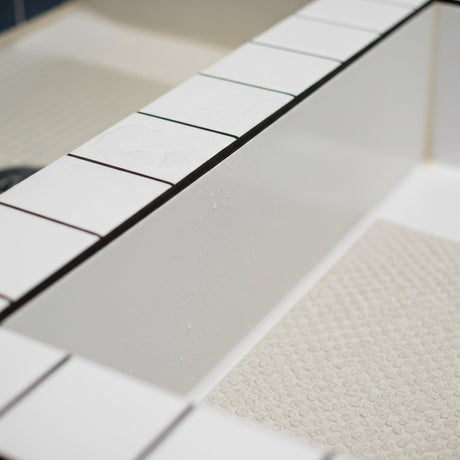

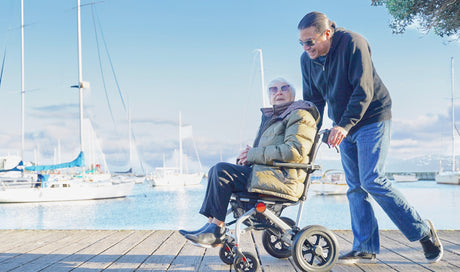
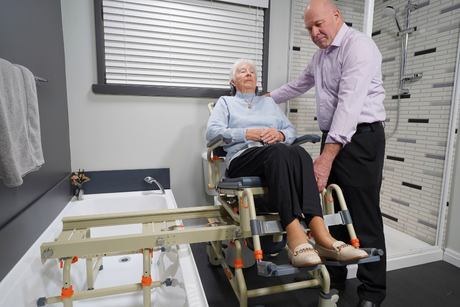
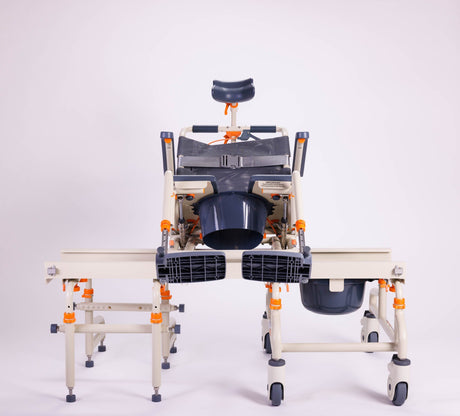
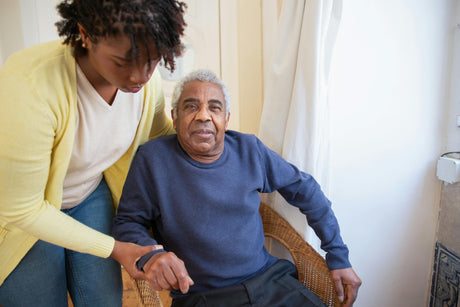
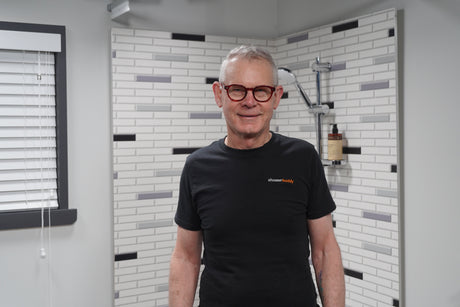
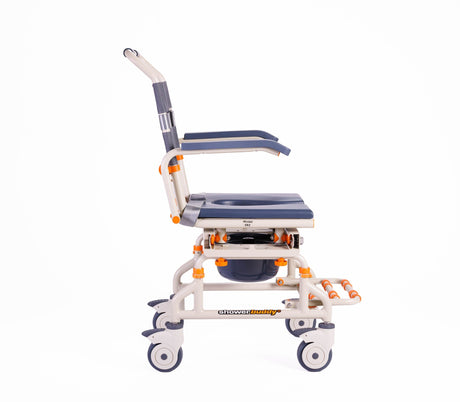
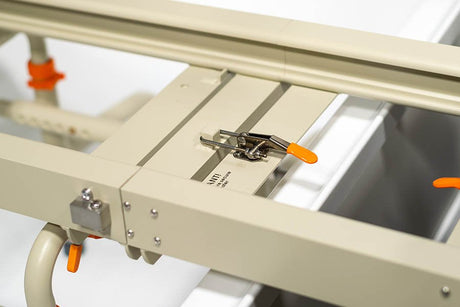

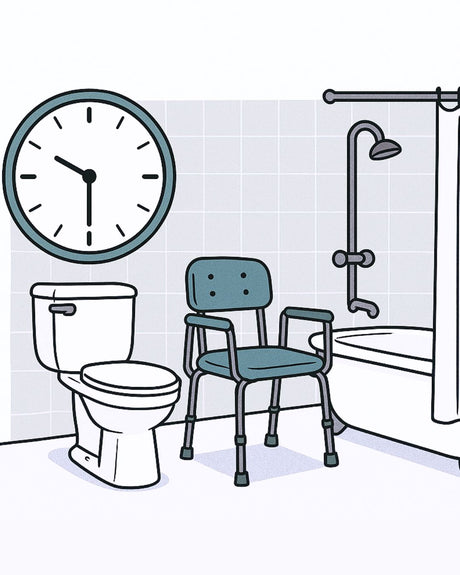
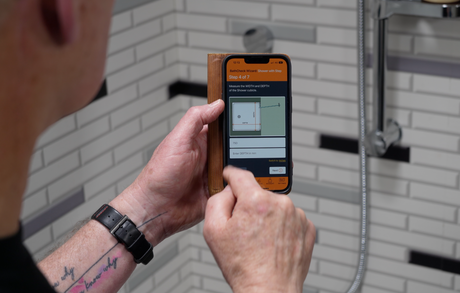
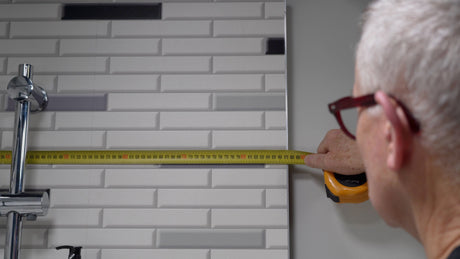

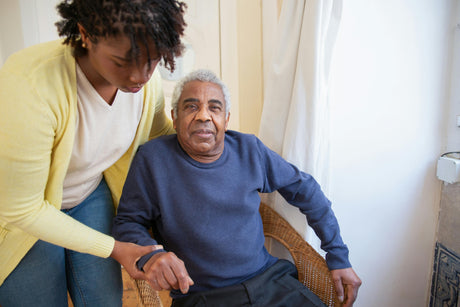

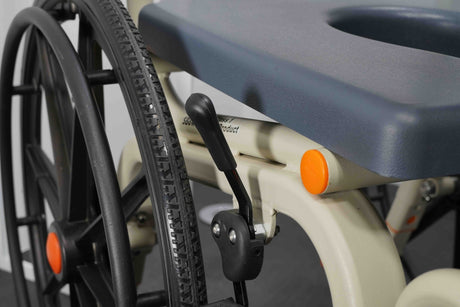


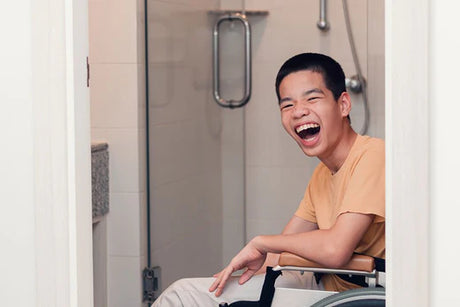
![Toilet Training A Young Child With Mobility Challenges [And How A Shower Chair Can Help]](http://shower-buddy.com/cdn/shop/articles/toilet-training-disabled-child_520x500_a90e5234-d372-435d-aa56-8da15dd3836c.webp?v=1722557239&width=460)

